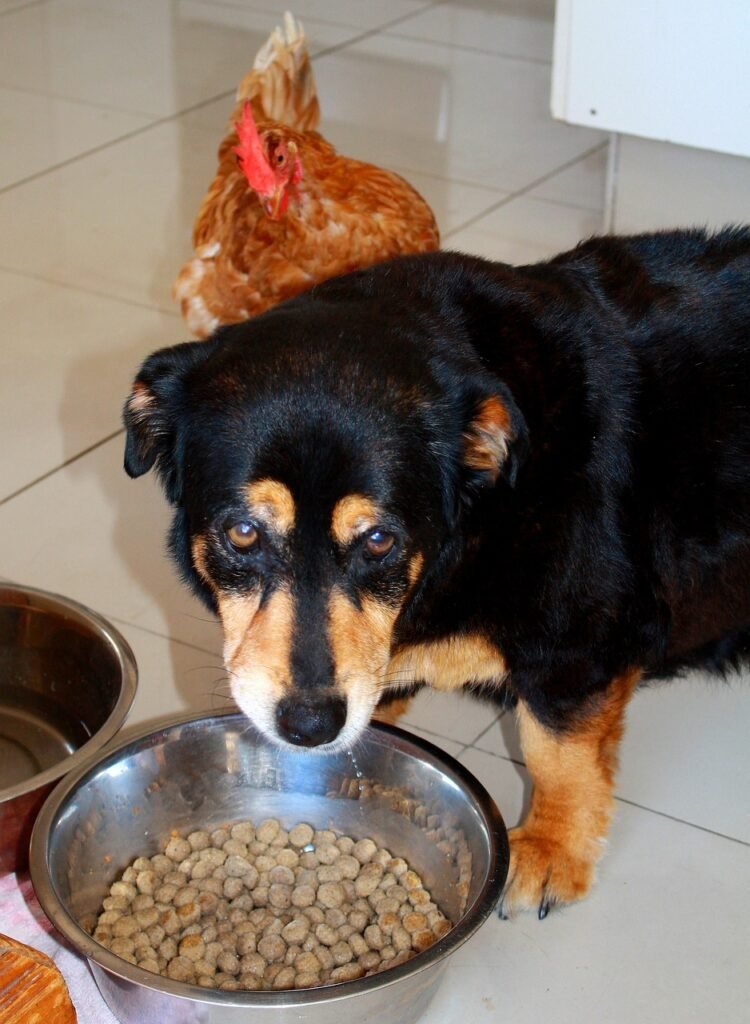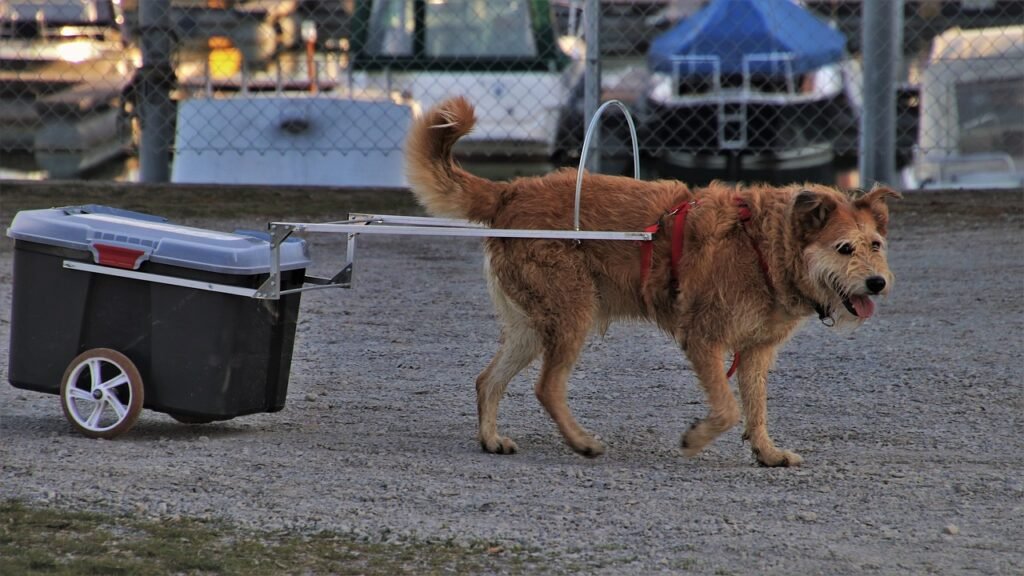Intro
Are you considering making the switch to a raw dog food diet for your senior furry friend? If you’re looking to improve your dog’s overall health and well-being, you might be curious about the benefits of raw dog food. In this comprehensive review, we’ll dive deep into the world of raw dog food diets, exploring the pros and cons to help you make an informed decision for your beloved canine companion.
Navigating the Shift to a Raw Dog Food Diet

Embarking on a journey towards introducing a raw dog food diet to your senior pet necessitates a mindful approach, one that balances enthusiasm with caution. The transition, although potentially transformative for your dog’s health, must be undertaken with care to ensure its success and to avoid potential setbacks. The initial step involves a comprehensive discussion with your veterinarian, a crucial ally in this dietary overhaul. This professional consultation aims to tailor the diet to your dog’s unique health requirements, considering any existing conditions that might influence dietary choices.
Once you’ve secured a vet’s endorsement, the real journey begins. Transitioning isn’t about a sudden overhaul but rather a gradual introduction of raw foods into your dog’s existing diet. Start with small amounts of raw food mixed into their regular meals, gradually increasing the raw portion over several weeks. This method helps your dog’s digestive system adjust without shock, mitigating the risk of digestive distress.
A significant consideration during this phase is the selection of raw ingredients. Quality matters immensely. Opting for high-quality, preferably organic, meats and vegetables ensures your senior dog receives the nutrients needed without the added risk of contaminants. Furthermore, understanding the balance of nutrients – from proteins and fats to vitamins and minerals – is paramount. A well-rounded raw diet supports overall health, especially crucial for senior dogs whose nutritional needs are distinct.
Preparation is another aspect that cannot be overlooked. The process of preparing raw meals might seem daunting at first. It requires time, effort, and a commitment to maintaining high hygiene standards to prevent bacterial contamination. However, the endeavor becomes less intimidating with practice and the right tools. Investing in quality kitchen equipment and dedicating space for meal prep can streamline the process, making it a less cumbersome and more enjoyable part of your routine.
Navigating the shift to a raw dog food diet for your senior dog embodies a commitment to their health and wellbeing. It’s a journey that, while requiring careful consideration and preparation, holds the promise of a revitalized, healthier companion whose later years are filled with vitality.
Unveiling the Benefits of Raw Dog Food

Diving deeper into the realm of a raw dog food diet illuminates a spectrum of advantages that could significantly enhance the well-being of senior dogs. At the core of these benefits is the enriched nutrient profile found in unprocessed, fresh ingredients. Raw diets stand out for their high protein content, an essential element for sustaining muscle mass in older dogs, which naturally tends to decline with age. This diet type also supplies a robust amount of healthy fats, pivotal for supporting joint health—a common concern in senior canine care.
Beyond the basics of protein and fats, raw diets are celebrated for their direct delivery of enzymes and vitamins often lost in the cooking process. These vital nutrients play a key role in optimizing digestion, ensuring that senior dogs not only intake nourishing food but also effectively absorb these nutrients. The result? A noticeable uptick in energy levels and an enhanced metabolic function, which is particularly crucial as dogs age and their systems become less efficient.
The external manifestations of transitioning to a raw diet are equally compelling. Many pet owners witness a transformation in their dogs’ physical appearance, with coats becoming lusher and skin healthier. This visual improvement is a tangible indicator of the internal benefits the diet provides. In addition, a raw diet can lead to better dental health, thanks to the natural teeth-cleaning action provided by chewing on raw, meaty bones. This can result in fresher breath and a reduction in plaque build-up, contributing to overall health maintenance.
Incorporating raw foods into a senior dog’s diet can also translate to more enthusiastic meal times. The natural textures and flavors found in raw ingredients can rekindle an older dog’s interest in food, an aspect that can sometimes wane with age and dietary monotony.
By introducing a diet rich in raw, whole foods, pet owners embark on a path to potentially elevate their senior dogs’ quality of life, addressing both internal health needs and external physical conditions in a holistic manner.
Personal Journey: Observing the Changes

Embarking on the raw dog food diet journey with my senior canine companion was undertaken with a blend of optimism and cautious anticipation. The commitment to this dietary transition was not made lightly, driven by a deep desire to enhance the twilight years of my beloved pet. As we navigated through the initial stages of incorporating raw elements into his diet, the observations that unfolded were both affirming and profoundly impactful.
In the weeks that followed the introduction of raw foods, the changes in my dog were both visible and palpable. There was a notable vibrancy in his demeanor, an energy that seemed to tap into a more youthful version of himself. This was not just a superficial shift; it was as though the very essence of his well-being had been invigorated. His coat, once lackluster, began to exhibit a sheen and softness that spoke volumes of the internal nourishment he was receiving. The dietary change had seemingly ushered in a revival of vitality that I had not observed in years.
But the benefits extended beyond aesthetics. Historically, meal times had become routine and, admittedly, somewhat dispassionate for him. The introduction of raw, textured foods rekindled an enthusiasm for eating that had been missing. It was a pleasure to witness this renewed interest in his meals, each bite seemingly savored with a newfound appreciation for the natural flavors and variety now present in his diet.
The most compelling testament to the raw diet’s efficacy, however, was observed in his digestive health. Previous diets had often left him with discomfort and sporadic issues that we struggled to remedy. Transitioning to raw foods brought about a stabilization in his digestion, noticeable in his comfort and regularity. This improvement was a crucial indicator of the diet’s positive impact, given the importance of digestive health in overall well-being, especially for a senior dog.
As we continued on this journey, the transformative effects of the raw dog food diet reinforced the decision to embrace this path, underscoring the profound difference that dietary choices can make in the health and happiness of our canine companions.
Weighing the Cons: Considerations Before Making the Switch

Embarking on the raw dog food diet journey with your senior dog presents a myriad of benefits, yet it’s crucial to navigate this path with a clear understanding of the potential hurdles as well. One of the primary considerations is the financial and temporal investment required. Transitioning to a raw diet often entails a higher expenditure, not just in terms of the cost of ingredients but also the investment in proper storage and preparation tools. This aspect could pose a challenge for pet owners operating within a tight budget or those with limited time to dedicate to meal prep.
Additionally, the shift to raw feeding brings to the fore the critical issue of food safety. Raw meats and vegetables harbor a risk of bacterial contamination, including salmonella and E. coli, which can have adverse effects on both canine and human health if proper hygiene practices are not meticulously followed. This risk necessitates a heightened vigilance in food handling, from sourcing to serving, which can add another layer of complexity to meal preparation.
For some dogs, particularly those with sensitive digestive systems or specific dietary restrictions, the transition to a raw diet may not be seamless. Initial digestive discomfort, including changes in stool consistency, is not uncommon as their systems adapt to the new diet. This period of adjustment requires patience and, in some cases, might necessitate a reevaluation of whether raw feeding is the optimal choice for the individual dog.
Understanding these considerations is key to making an informed decision about transitioning your senior dog to a raw diet. It underscores the importance of approaching this dietary change with a balanced perspective, armed with knowledge and preparedness to address the challenges that may arise.
Making an Informed Decision: Is Raw Right for Your Senior Dog?

Deciding whether to transition your senior dog to a raw dog food diet is not a choice to be made lightly. It’s a decision that sits at the intersection of nutritional science and personal care, requiring a nuanced understanding of your dog’s unique health profile. Beyond the general benefits that raw diets are touted for, there’s a need to zoom in on the individual: your dog, with their specific needs, preferences, and possibly pre-existing health conditions.
The starting point for this discerning journey should always be a consultation with your veterinarian. This professional guidance is invaluable, ensuring that you’re not navigating this significant change in the dark. Your vet can offer insights into how a raw diet might interact with your dog’s current health status and whether it’s likely to bring about the positive changes you’re hoping for. It’s about tailoring the diet to fit, rather than trying to make a one-size-fits-all solution work.
Once you’ve got the green light from a vet, the next step is to educate yourself. Dive into research, understanding not just the broad strokes but the fine details of raw feeding. This includes recognizing the best sources for raw ingredients, the importance of balancing nutrients, and acknowledging the effort that goes into meal preparation and safety. The goal is to build a comprehensive picture of what raw feeding entails, empowering you to make choices that are informed and intentional.
It’s also worth considering the lifestyle implications of this dietary switch. Raw feeding demands time, effort, and a certain level of commitment to maintaining rigorous standards of hygiene and food safety. Reflect on whether this fits within the constraints of your daily life and whether you’re ready to make this investment for the sake of your senior dog’s health.
In essence, the decision to switch to a raw diet is as much about the specifics of your dog’s needs as it is about your capacity to meet the demands of this feeding philosophy. It’s about striking a balance between the potential for profound health benefits and the practicalities of your everyday life, ensuring that your decision is both informed and sustainable.
The Verdict: Overall Rating and Summary

After careful consideration and thorough analysis, the decision to incorporate a raw dog food diet into the regimen of a senior dog is one that warrants strong endorsement, albeit with a few reservations. This diet’s substantial benefits, including the enhancement of digestive function, noticeable boosts in energy, improved condition of the coat, and overall health, position it as an advantageous choice for those aiming to elevate their aging companion’s quality of life.
However, it’s crucial to acknowledge the hurdles that might deter some pet owners, such as the requirement for a significant investment of both time and financial resources, alongside the imperative for stringent food safety practices.
The consultation with a veterinarian emerges as a critical step in this process, ensuring that the diet aligns with the specific needs of your senior dog. The commitment to navigating the complexities of raw feeding, from sourcing quality ingredients to meticulous meal preparation, underpins the success of this dietary transition. It’s a journey that demands dedication but promises to reward both you and your pet with discernible health benefits.
Taking into account the comprehensive benefits alongside the challenges, the raw dog food diet for senior dogs merits a 4 out of 5 stars rating. This rating reflects a balanced view, recognizing the diet’s significant potential to positively influence the health and happiness of senior dogs while also considering the practical implications for pet owners. Ultimately, the choice to transition to a raw diet should be made with both heart and mind, grounded in a commitment to providing the best care possible for your cherished canine companion in their golden years.

